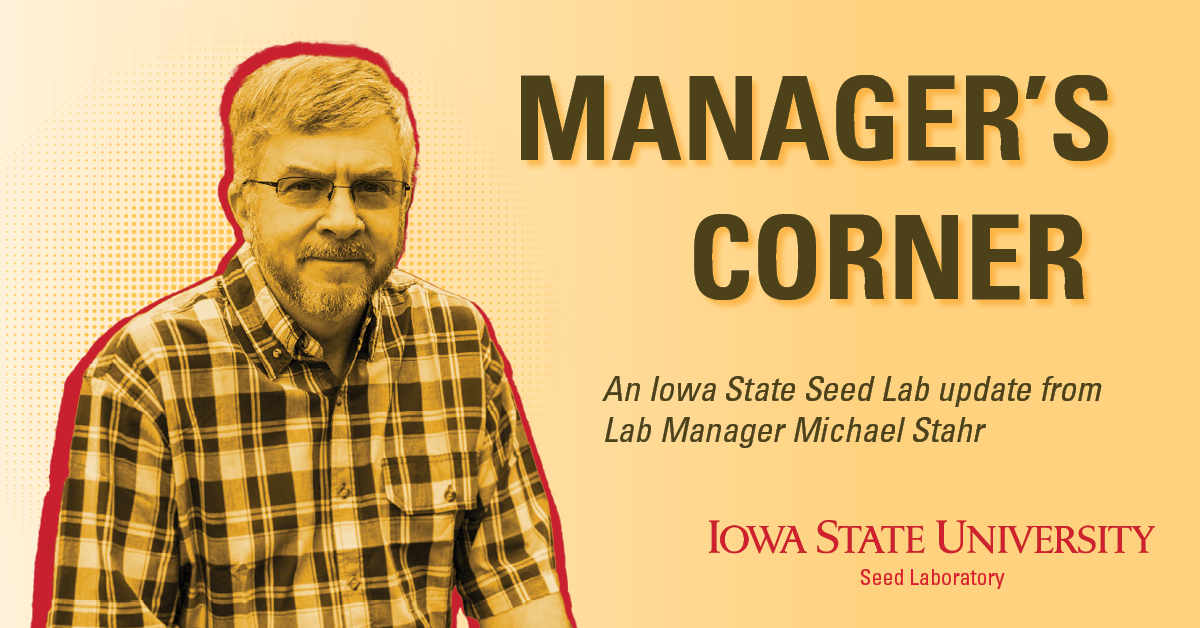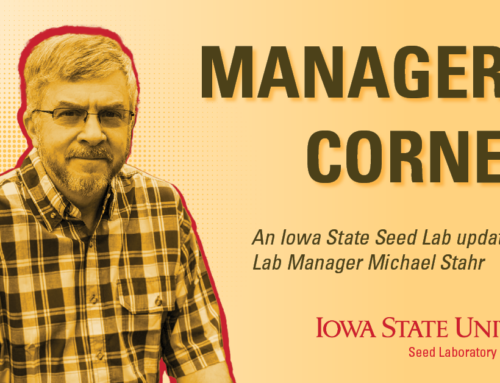Dealing last summer with rye seeds that had issues with fungal infection by Fusarium spp. and low germination was a bit of a warning about potential corn and soybean seed quality this fall and winter. The rains that occurred during the summer became more numerous in September and October, with rainy stretches lasting on & off for a week or more. Corn seemed to “weather” the conditions very well, but soybeans are a different situation. Apparently, soybean seed and grain that were harvested before the week-long rains were least affected by fungi. However, soybeans that endured repeated periods of rain, fog and dry conditions for the most part have problems with Phomopsis (Diaporthe) and Fusarium species.
Phomopsis (Diaporthe) spp. produce overwintering bodies called pycnidia which contain spores (conidia). The spores infect the stems and pods (pod and stem blight) and if field conditions are rainy and/or foggy, infection can spread to seeds inside the pods. So far, standard germination tests using crepe cellulose paper (Versapak TM ) have had a range in results from 10% to 99% germination with many seed lots in the range of 50% – 70%. If Phomopsis is mostly on seed coats then normally a sand germination test or paper towel test will strip the seed coat from the seed and help with the germination test result. That is not the case this fall with sand and regular germination tests usually being within 5-10% of each other. Fusarium spp. don’t produce pycnidia and is present superficially or within soybean seeds. Sand has the advantage of separating seeds on trays of seeds, but Iowa State University Seed Lab staff have done a good job of recognizing when fungi spread from one seedling to another and that is compensated for. An interesting tidbit about Phomopsis spp. is that it dies out during the hot, humid period of the accelerated aging (AA) test and so it isn’t unusual to have higher AA results than germination test result.
What can a seed company or farmer do to improve germination test scores and hopefully field emergence for seeds with these fungi? During this testing season, seeds that were fungicide-treated have shown improvements in germination scores of up to 20%, with the most common improvement 10-15%. At the ASTA CSS Seed Conference held earlier this month in Chicago there were reports of improvement up to 40%, but that seems to be a rare and unlikely increase. The other alternative is to condition the seeds to remove seeds which are discolored (color sorter), misshapen (spiral separator) or light (gravity table).
The Seed Lab offers custom treating of seed samples to be tested which will give the sender a reasonable idea of likely improvement should the entire seed lot be treated. For more information on seed conditioning e-mail Alan Gaul, seed conditioning specialist at the Seed Science Center or call 515-294-4011. For more information on testing “moldy” seeds and possibly improving results of testing, contact Dr. Charles Block (seed pathologist) or Mike Stahr (Seed Lab manager) at 515-294-6826 or e-mail seedlab@iastate.edu. The Seed Lab web page is available at www.seedlab.iastate.edu.


